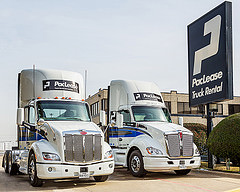Server Room Technology

The best configurations for server cooling fans Employing a strategy for cooling server areas Computer services are becoming more dependent on servers. As software users turn to cloud-based systems, processes once confined to individuals computers now are being shared through server systems. Additionally, reliability has become more important. Failure rates must be reduced.
One of the biggest causes of server failure is overheating. Server components are sensitive to heat, even more so than desktop or laptop computer systems. That means higher running temperatures not only result in catastrophic, one-time failures, but can weaken components over time leading to future failures.
The first step in a server room cooling strategy is to make sure the overall room remains as cool as possible. The server room ideally should feature a dedicated air-conditioning system. Experts agree room temperatures should remain above 50 degrees Fahrenheit and not exceed 80 degrees. The rooms ambient temperature does not help with direct cooling of the computer systems themselves. But with a server fan strategy in place, the cold room certainly helps absorb heat pushed off the server equipment racks.
Server cooling fans should also be placed in and near the server racks. However, fans only placed within each server node will not be adequate. An overall, air-flow strategy must be applied. Administrators should inventory the entire rooms ventilation system, placing fans to maximize air flow through the racks. Cooling fans for individual sever components should ideally be placed at the front and the back of each chassis in the rack. Administrators should also watch that the hot exhaust fan is not blowing into the cool air intake. Also care should be taken not to push heat from one computer or server onto another. Additionally, fans should be installed in the server cabinets to help pull additional heat from each node area.
Such a server cooling fan strategy can mean dozens of fans running in each rack. Modern cooling fans are smaller than in the past. The size has not diminished the amount air they produce. Theyre also more energy efficient. Development of radio-controlled electric fans has led to further efficiencies. These fans usually cost less, are twice as efficient, and can be more than ten times more compact than traditional electric fans. For these reason, server administrators should not hesitate to employ as many fans as possible.
As budget allows, server network administrators should also strive to deploy server cooling fans with the highest speeds. Fans reaching speeds of more than 160 miles per hour may make the server room feel or sound like a wind tunnel, but is the best method for pushing the high heat from the racks into the cool ambient temperature of the server room.
Using a remote monitoring system can prove helpful as well. Such a system can be used to alert administrators to jumps in room, rack or individual node temperatures. Advanced systems also can monitor specific server cooling fans to ensure they are working as efficiently as possible.
Administrators should map an overall cooling strategy for server areas. This includes appropriate room temperature as well as adequate, efficient and correctly placed cooling fans on individual server equipment and racks.
Mechanical Engineer
www.nmbtc.com
More Technology Articles
